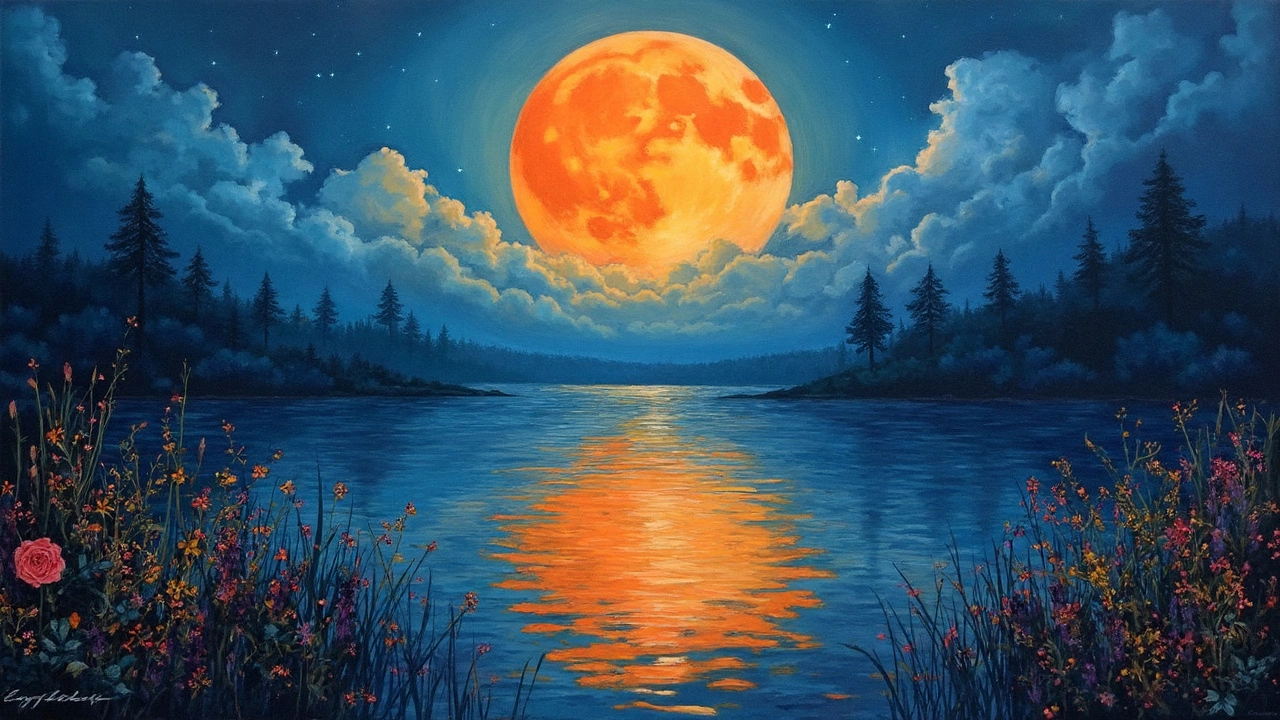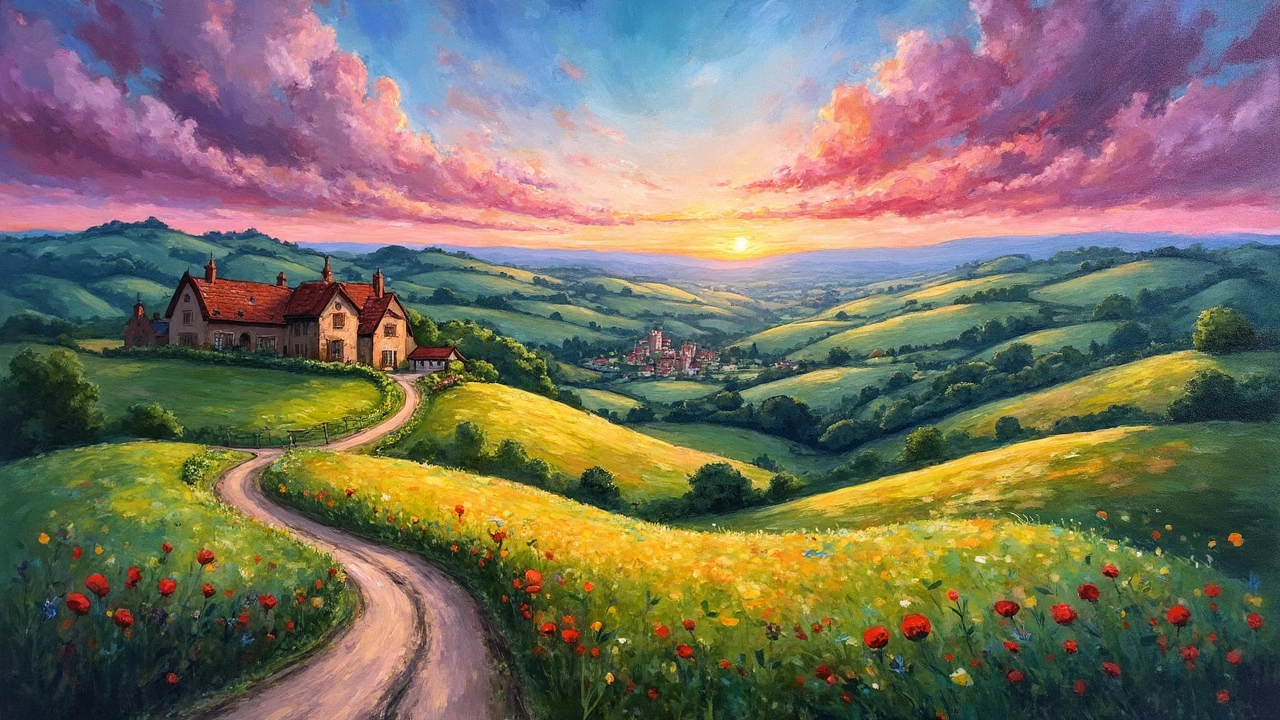Ever looked at a landscape painting and thought something was just missing? It can happen! But before you chalk it up to a bad art day, there are some nifty tricks you can try to make your artwork pop. Landscapes don’t have to be predictable or boring. Let's think outside the box and find ways to spice things up a bit.
First off, let's talk perspective. Changing up the angle or viewpoint can totally change the vibe of your artwork. Instead of sticking to eye level, why not try a bird's-eye view or a worm's-eye view? These can give the painting an unusual twist that grabs the viewer’s attention.
Then, there’s color. Ever considered tossing in a color that feels a bit 'out there'? A splash of pink in a sunset or a little turquoise in the trees can make things interesting. It's these unexpected touches that can make people look twice.
- Playing with Perspective
- Incorporating Unexpected Colors
- Adding Textures for Depth
- Using Light and Shadow
- Choosing Unique Subjects
- Layering Techniques
Playing with Perspective
Getting creative with perspective can seriously shake up a landscape painting. It’s all about how you see the world — literally! The way you position the horizon line can either stretch your scene out or make it feel intimate and cozy. Lifting the horizon can open up the sky, while lowering it brings more focus to the ground features.
Art techniques like using vanishing points on horizons can help create depth and dimension. Imagine standing in the middle of a road that seems to get narrower the further it stretches away. That’s perspective at work, my friend!
For anyone feeling bold, mix it up with a high or low angle shot, almost like you're viewing it through a drone or crawling through tall grass. This can lead to some stunning effects that really pull a viewer in. Playing with these unique perspectives can lead to more engaging and dynamic compositions.
To give you another idea, consider overlapping objects to show distance. Putting larger elements in the foreground and smaller ones in the back can give a sense of depth. It’s a bit like real-life photography where positioning can make a huge difference in how folks perceive your piece.
And hey, don't shy away from trying perspective with abstract elements. Combining real-life scenery with imaginative twists is a fun way to add interest. Landscapes don’t always have to be realistic!
Incorporating Unexpected Colors
When it comes to livening up a landscape painting, nothing says 'wow' quite like a pop of unexpected color. Think about it: nature isn’t just greens and browns—in the right light, a million colors dance across a landscape.
So, why not play around a bit? Adding a splash of color that isn’t typically “there” can invite a more imaginative view. You know those dreamy, sunset-soaked beaches that look almost surreal with pastel skies? That’s the magic of unexpected color at work.
Start by picking a dominant color scheme for your painting. Then, choose a bold, contrasting hue to mix into small areas. It's like giving your painting a secret little sparkle that keeps people engaged. For example, a lavender sky over a snowy landscape or a turquoise shadow under a tree can bring a whimsical vibe.
Here's a little pro tip: use complementary colors. If your landscape is predominantly green, consider adding touches of red or orange in places like the sky or water reflections. This can create a visual balance that feels both surprising and satisfying.
And if you really want to shake things up, try using opposites from the color wheel. A sunny field could suddenly host violet shadows. These touches can make the difference between a good painting and one that truly stands out.
In fact, some artists have started dabbling with neon colors in landscapes for that modern twist. It might sound a bit wild, but hey, it's all about experimentation. The key is not to overdo it—just hinting at these colors can still look grounded yet give off a playful energy.
Australia’s famous landscapes often embrace unexpected hues; think of the rust-red earth against bright blue skies in the Outback. Drawing inspiration from such natural, yet eye-catching palettes can set your painting apart.
Here’s a quick rundown of some ideas:
- Use a complementary color to highlight shadows or lighting.
- Try a monochrome theme and add one contrasting color for effect.
- Incorporate pastel tones for a dreamy, surreal atmosphere.
- Experiment with using neon or metallic paints sparingly.
Remember, when you’re experimenting with colors, it’s really about finding what feels right for you. Let your imagination lead, and don’t be afraid to step outside the box. Your art techniques might just inspire someone else to see landscapes in a completely new light!
Adding Textures for Depth
When it comes to making a landscape painting more engaging, adding textures is a game-changer. Why? Because textures can turn a flat piece of art into something you almost want to touch. They add a tactile feel that draws people in, making the scene feel more alive and multilayered.
Think about using modeling paste or gel medium. These materials can be applied to the canvas to build up areas that you want to pop out, like rocky hills or the rough surface of tree bark. Experiment with different tools, like palette knives or even unexpected objects like sponges, to create diverse effects.
"Texture is incredibly important in a painting. It conveys mood and emotion, and it creates a sense of reality," says renowned artist David Hockney.
Another approach is to mix sand or sawdust with your paint. This gritty addition can especially enhance areas like pathways or beaches within your landscape painting. But don’t overdo it—subtlety is key. Too much texture can overwhelm the viewer and take away from the overall composition.
If you’re wondering where to start, focus on the areas that naturally have a lot of texture in real life. Stones, leaves, and water are all perfect candidates. By emphasizing these features, you give the viewer visual cues that bring the landscape to life.
Incorporating textures isn’t just about the surface, though. It's also about depth. Layering your textures can give the illusion of foreground and background, tricking the eye into perceiving more than what’s physically there. Step back occasionally while you work to see how the textures play with light and shadow—this makes a world of difference.

Using Light and Shadow
The magic of landscape paintings often lies in how light and shadow dance across the canvas. It can make a painting come alive or set a specific mood. Understanding how to use these elements well is like having a secret weapon in your artist's toolkit.
First, consider the time of day you want to capture. Different times bring different light quality, which affects the colors and shadows. Early mornings and late afternoons, for instance, cast long shadows with a warm glow, adding drama to your painting. Midday light, on the other hand, can be harsh and flatten the scene, so subtly blending shadows can be key to adding depth.
Experiment with the direction of your light source. Is it coming from the left, right, above, or below? Depending on your choice, the interplay of light and shadow can emphasize different aspects of your art. Side lighting often enhances the texture, making the painting more dynamic. Backlighting can create silhouettes, offering a sense of mystery.
Understanding the basics of shadow colors can also help. Shadows are rarely pure black; they often take on a bluish or purplish hue because they’re affected by the ambient light around them. Playing with these tones can make the scene more lifelike.
- Try softening edges where light and shadow meet for a more natural look.
- Mix different paint textures to mimic the softness or sharpness of shadows.
- Take advantage of glazing techniques to layer subtle shadows over lighter areas.
If you're feeling a bit analytical, it might help to know that studies suggest paintings with dynamic use of light and shadow can engage viewers more deeply. For instance, the Renaissance masters used something called chiaroscuro, the contrast between light and dark, to create drama. This technique's power remains undeniable even today.
So, when you're working on your next landscape piece, think about light and shadow as characters in their own right. They’re not just there to fill space, but to tell a story and draw people in.
Choosing Unique Subjects
When it comes to landscape painting, the subject is your playground. So why not pick something a bit unexpected? Picture a landscape that isn’t just rolling hills or a peaceful lake. Instead, maybe it's a bustling urban setting with the city skyline or a rugged, desert scene.
Think about incorporating local flavor. Living in Wellington, perhaps capturing the vibrant energy of Cuba Street or the dramatic views from Mount Victoria can make your painting both unique and personal. It's these places filled with character that can tell a story.
Consider seasonal changes. A familiar scene can be transformed just by painting it in a different season. The soft pastels of cherry blossoms in spring or the rich, warm hues of autumn leaves can bring a whole new feel to your work.
If you're feeling adventurous, blend nature with the surreal. Adding fantasy elements, like whimsical creatures or floating islands, can turn a typical landscape into a captivating narrative. It’s all about letting your creative juices flow.
- Explore local landmarks that resonate culturally or historically.
- Imagine landscapes during different weather conditions for variety.
Choosing the right subject can elevate an ordinary painting into an eye-catching piece of art. All it takes is a dash of creativity and the courage to step outside the usual canvas.
Layering Techniques
Layering might sound a bit technical, but it's one of those game-changers in making your landscape painting sing with depth and vibrancy. Think of it like building a sandwich: different layers add more flavor and complexity.
First, let’s chat about the basics. Start with a solid base. This could be a wash of color that sets the mood of your scene. Once you've got that down, it's time to build up from there.
One method is to gradually layer from dark to light. By starting with darker shades and then moving to lighter ones, you can create depth that makes the landscape appear more three-dimensional. This technique is especially effective when you're trying to capture the variation in natural scenes, like a mountainscape with its play of shadows and highlights.
Next, consider introducing some texture. This is where things get exciting! Using tools like palette knives, you can add layers of thick paint for a more textured feel. This not only adds interest but can also create a sense of movement. For instance, using thick impasto for clouds can make them look fluffy and dynamic.
Don’t forget to let layers dry before adding more. This can prevent colors from becoming muddy and ensure each layer stands on its own, contributing to the overall composition.
To pull all your layers together, think about using glazing techniques. A thin, transparent layer of paint can harmonize colors and bring everything into balance. Plus, glazing can add that touch of light and shadow that turns a bland scene into something truly atmospheric.
Wanna go experimental? Mix it up with different materials in your layers—whether it's sand for a gritty effect or tissue paper for a gentle textured base.
| Material | Effect |
|---|---|
| Palette Knives | Thick texture |
| Glazing | Subtle light effects |
| Sand | Grittiness |
| Tissue Paper | Gentle texture |
With these layering techniques, your art techniques toolbox just got a little more interesting, and your landscapes will never look flat again!

